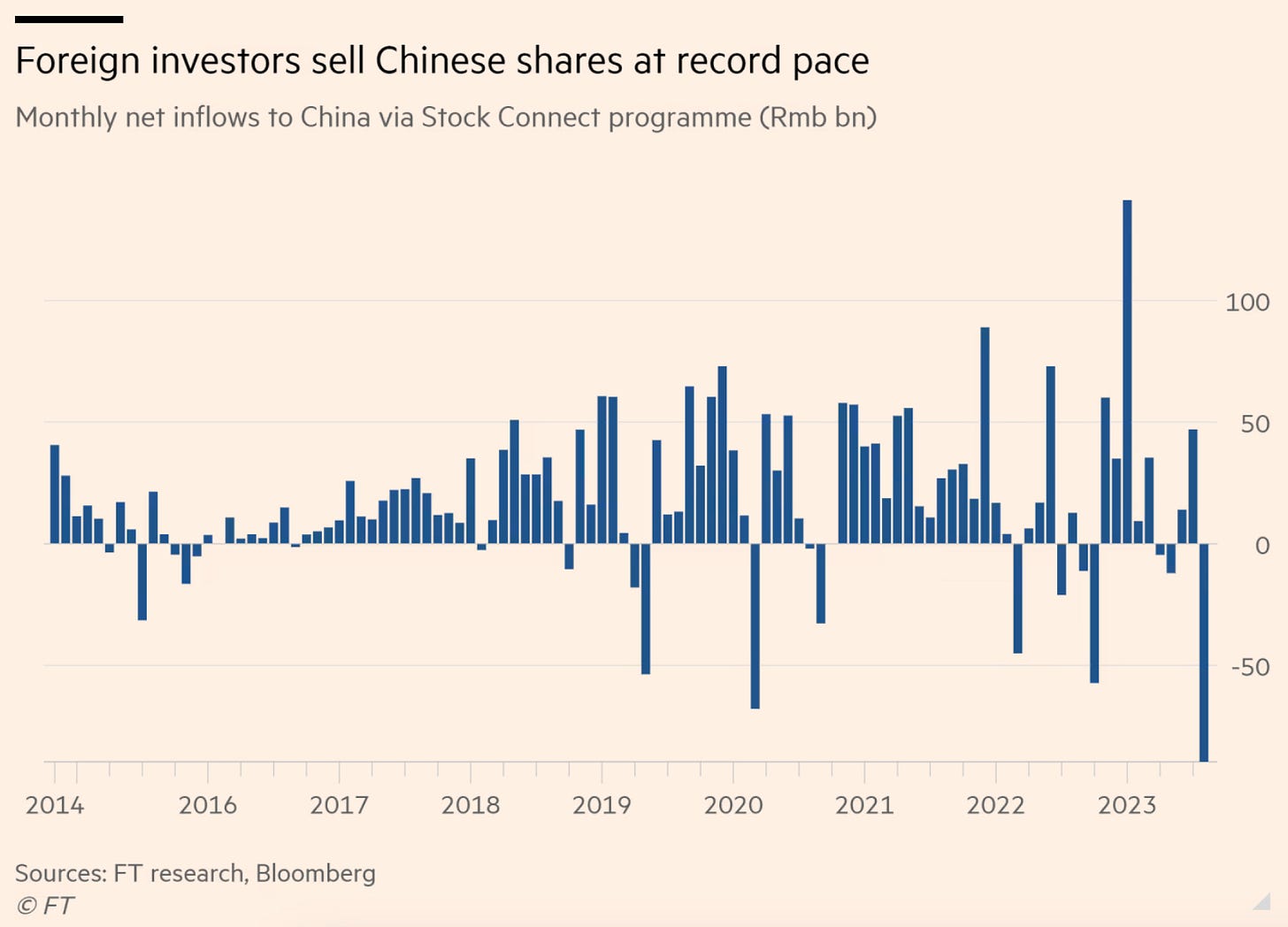The Contrarian China Come-Up
China equities can go higher into the year-end if the Yuan plays out how we think it will.
As piecemeal assistance measures from Beijing failed to allay fears over slowing development in the world's second-largest economy and a deteriorating crisis in the country's property sector, foreign investors liquidated a record $12 billion worth of Chinese stocks in August.
The unheard-of outflows coincide with data released on Thursday showing that China's manufacturing sector shrank for a fifth straight month, despite leaders' promises to deliver more significant support measures for the crucial property sector, which typically accounts for about a quarter of annual economic activity, in late July.
Beijing had also cut a levy on share trading in August for the first time since the 2008 financial crisis. Stocks initially climbed as much as 5.5 per cent after the Ministry of Finance said it would halve stamp duty to 0.05 per cent in order to “invigorate capital markets and boost investor confidence”. But the index closed just 1.2 per cent higher, while Hong Kong’s Hang Seng index was up 1.3 per cent in afternoon trading after paring initial gains of more than 3 per cent.
By comparison, the gauge closed up more than 9 per cent the day after the levy was last cut in 2008.
These factors show the fragile nature of China’s markets and investor sentiment. However, we lay out the reasons why the People’s Bank of China may allow a weaker Yuan to save their economy and why we may see an equity rally into the year-end.
Chinese Yuan
USDCNH is on the move higher again, breaking back above 7.00 in May and continuing to push towards the highs of 7.37 that we saw last year.
The PBoC are in a tough spot with the currency but ultimately feel they will sacrifice a weaker Yuan in order to save the economy. It’s true that a weaker currency will make it more expensive to pay off USD-denominated debt. Yet the benefits of a lower Yuan make exports more attractive, likely boosting demand for local businesses.
For offshore traders and investors alike, buying USDCNH remains one of the cleanest ways to express a slowdown (or outright panic mode) in China for the rest of the year.
The only point we flag is that for the retail crowd, accessing CNH isn’t easy. For professional investors, we’ve heard that onshore banks are tightening USD liquidity, making funding a short Yuan trade difficult as well.
In the rest of this article, we analyse:
The Dollar Index/S&P 500 inverse correlation
How this can give insight into the USDCNH/CSI 300 inverse correlation.
The technical breakout on FXI.
Finally, two individual China names to long into EOY.




